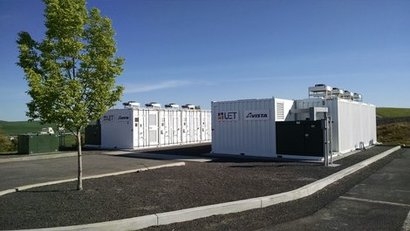
Protests in May by Extinction Rebellion in Edinburgh and London, a BBC documentary by Sir David Attenborough and a UK visit by the young Swedish environment campaigner Greta Thunberg have thrust climate change back into the headlines. In May the Committee on Climate Change said Britain should eliminate net greenhouse gas emissions by 2050, while The Times has launched a campaign for new Clean Air Act to grant a legal right to unpolluted air for everyone in the UK.
Storage will be crucial to remove greenhouse gases and limit pollution from energy production and transport, according to Ian Ellerington, Head of Technology Transfer at The Faraday Institution, which supports innovation in energy storage. But success could be years away.
“Batteries are really good at coping with peaks and troughs of four to five hours but are as yet nowhere near able to cope with days, months or seasonal shifts” Mr Ellerington said in issue 18 of Energy Matters, a magazine and e-zine produced by the property consultancy Galbraith. “That remains far more difficult to engineer cost-effectively. I’m not too worried as we have natural gas, but longer-term, we’ll need alternatives that provide similar flexibility.”
Ellerington added that heat storage presents a further challenge.
Cars are expected to play a big role in electricity distribution, working as mobile storage units, with drivers recharging when demand and prices are low, and being paid to feed power back into the grid at peak times.
Yet batteries alone cannot yet cope with the peaks and troughs of grid-scale supply, so the UK remains reliant on natural gas until effective alternatives are found, it is hoped before reserves run out.
Meanwhile, storage is starting to play an important role in helping grid networks balance fluctuations in the supply and demand of electricity, and the co-locating of battery storage with on-site generation from renewable sources is becoming increasingly popular with businesses, according to Joanne Plant, a planning specialist at Galbraith in Edinburgh.
Last September saw the opening of Scotland’s first utility-scale battery storage scheme at Broxburn, West Lothian, a 20MW facility that can respond to grid demands in milliseconds. Firms are seeking to invest in the technology to reduce their carbon footprint and their reliance on the grid while saving on energy bills, according to Ms Plant.
Some in the energy industry believe more can be done to facilitate storage deployment by expanding permitted development rights to make projects more straightforward.
For additional information:

